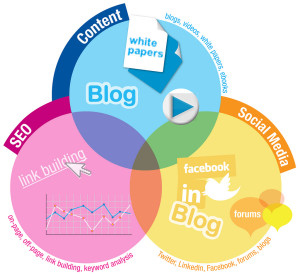In our last post, we introduced you to the concepts of inbound and outbound marketing and talked a little bit about what each of the two approaches look like. In this one, we’re going to be diving a little deeper into the inbound methodology and showing you how you can get started with your first inbound marketing campaign.
Inbound marketing relies on bringing people to you by providing great content, but not all of that content needs to be available for free. Sure, it’s a good idea to create a variety of written content to bring people in through search engines and social networking sites, but there’s no reason why you can’t put that content to good use by deploying calls-to-action to take your visitors through to a landing page.
On your landing page, you’ll need to provide an offer that captures people’s attention. This doesn’t have to be a monetary offer, although it’s also true that one option is to offer a discount coupon or something similar. Equally, though, the content itself can be the offer. For example, if you get the top experts in your field to host a webinar or commission a piece of original research, people will be more than happy to give you their email address in exchange for permission to access it.
Lead Nurturing
The key to great inbound marketing is the creation of valuable content that’s relevant specifically to your potential customers. If you’re bringing just anyone in then you sacrifice quality in exchange for quantity, and the vast majority of the leads you receive will be irrelevant to your business. If that happens, you’re just pouring money down the drain.
One of the problems with outbound marketing is that it’s typically more difficult to personalise it and to measure its effects. For many years it was the only real option that marketers had, but the rise of inbound marketing has provided an alternative so that outbound marketing techniques can now be used as and when they’ll be most effective instead of simply as the default.lt to consolidate all of that data and to draw overall conclusions.
But if you create the right content then you’ll receive the right leads, and when that happens you can start to nurture them from a lead to a customer. This involves starting to understand more about each individual lead and sending them content that’s super relevant to them. For example, if you’re a B2B IT company then you can send one set of messages to marketing departments while sending a different set to office managers.
Don’t make the mistake of getting someone’s email address and sending them constant sales messages, because they’ll quickly add you to their blocked list. Instead, you’ll need to focus on sending them emails that add value, perhaps by offering another piece of content for further information to augment the profiles that you’re building on each of your customers.
Many companies choose to use lead scoring software, which essentially allows you to give people points depending upon how they interact with you. For example, a social media share might give them one point while commenting on a blog post gives three and downloading an ebook gives five. Then, when a lead reaches a certain score, they can be handed over to a sales team. Then they convert into a customer and hey presto – you’ve got yourself an end-to-end inbound marketing campaign.
About Bant.io
Struggling with lead gen? Don’t worry – we’re here to help you to gather the leads you need to boost your business. Request a demo of Bant.io to find out how we can help your company to grow by sending hot B2B leads directly to your inbox. You won’t regret it.


